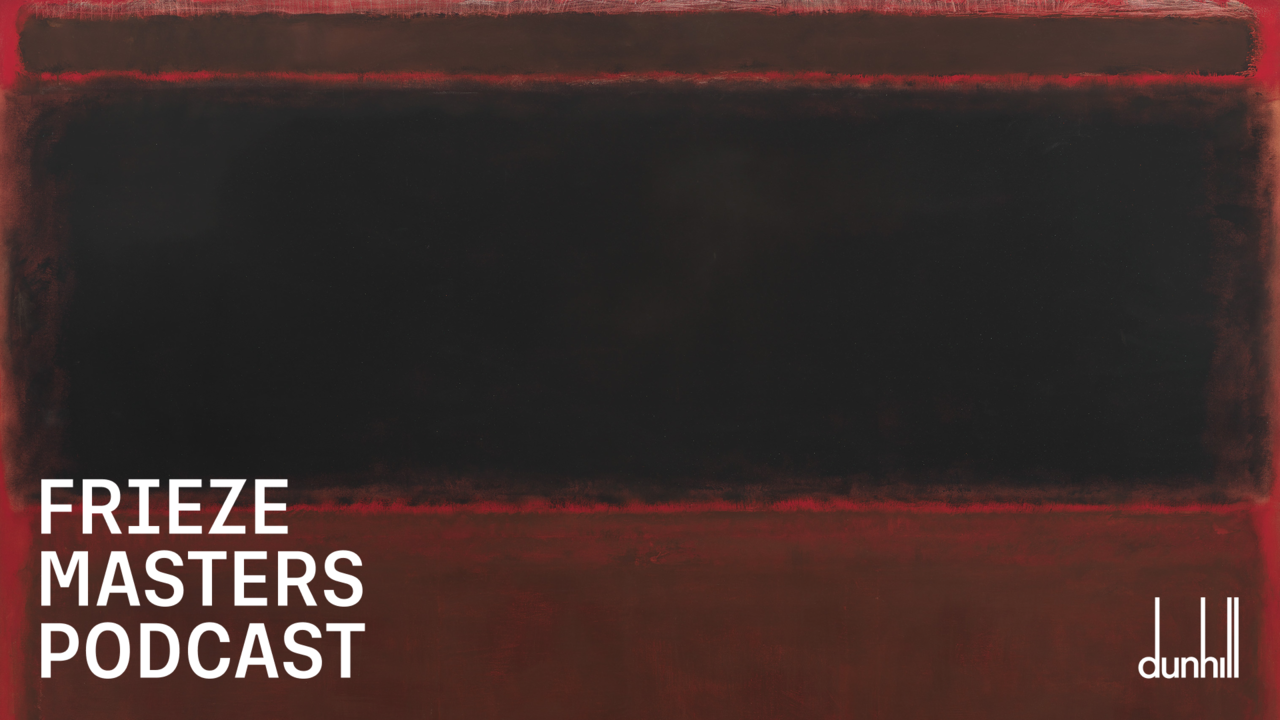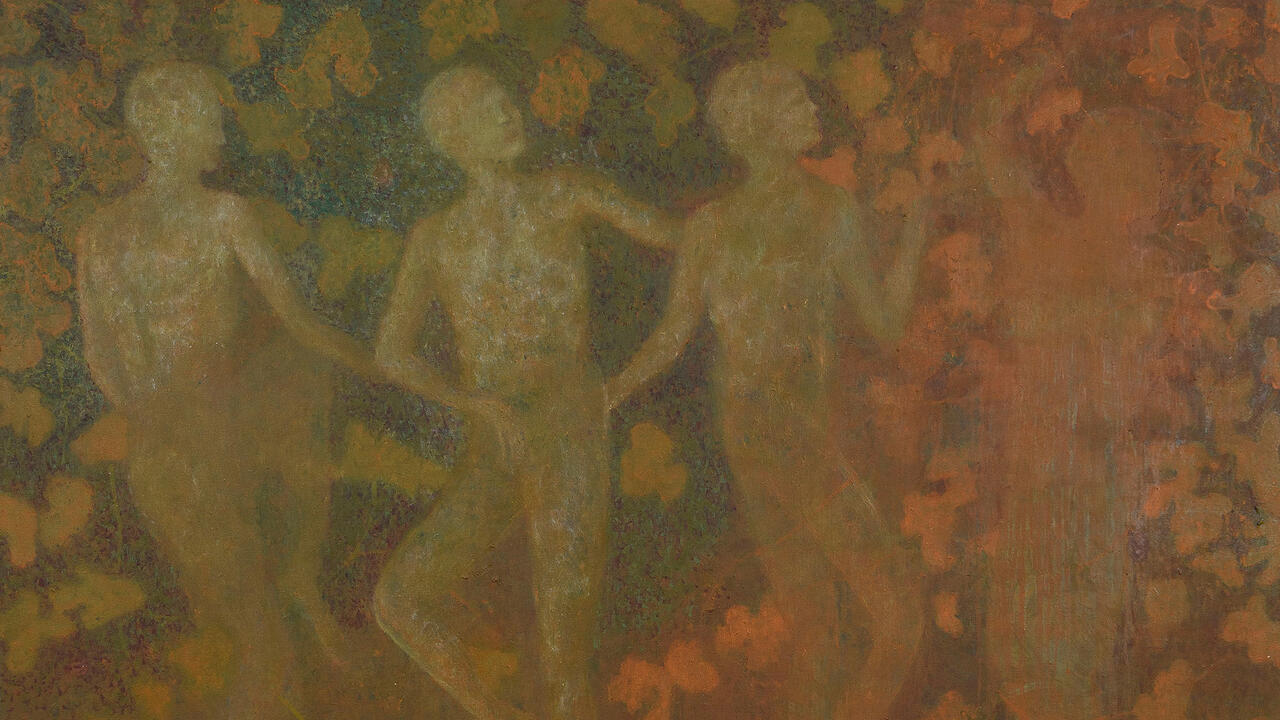Michael Krebber

Have you ever got into such a state of indecision that you literally start walking in circles? Setting off in a direction only to hesitate. No, that’s a bad idea: don’t do that. Walk back again. Change your mind, almost spinning on the spot. One filmic expression of this that comes to my mind is from Love Actually (2003), Richard Curtis’s post-9/11 romantic comedy (and not, it has to be said, a well-regarded movie). Andrew Lincoln’s character is walking in frustrated circles away from his best friend’s new wife, played by Keira Knightley, who has showed up at his door offering friendship and cake. He leaves her in his own house, walking indecisively back and forth, and eventually away from the object of his love, whom he admits that he prefers not to talk to, an act he explains as ‘self-preservation’.
So here we are, showing up in good faith at the door of Michael Krebber’s exhibition, his fourth at Maureen Paley, and here he is, preferring not to speak too much. The show itself comprises 13 paintings (all 2013) on the wall and one canvas laid on a low plinth that matches its dimensions, so that it almost seems like the lid of a box. Most of the works are a very bare kind of white with some floating activity in acrylic in one or maybe two school paint-box colours in single, brushy strokes. Fat streaks of yellows, blues, greens and reds. Blocky, naïve shapes. A brown squiggle with a fat square of green painted over it, which I gloss as an approximation of a tree so terrible, almost charmless, that it has come full circle and decided not to be a tree after all. Many of the brushstrokes that appear to be attempting to describe something have been masked by new layers of colour, covered up before they managed to go anywhere. Krebber checked out before we even turned up.
And this is all very well, but it is also presented with a kind of haughty panache that makes the viewer feel somewhat rejected, transferring any anxiety of the paintings back onto us. The material that swims around Krebber’s practices is unusual. It’s both controlled and confusing, too open and too closed, and involves a number of repetitive cues relating to his influential teaching work at the Stadelschüle in Frankfurt, his apprenticeships with Georg Baselitz and Martin Kippenberger, the scene of friends and artists around him, and a tacit acknowledgement of the fact that his end-gaming extends from a deep historical understanding of painting from Cologne.
No press release here, only an excerpt from an interview given to an unnamed, possibly fictional, interlocutor which accompanied a recent retrospective at CAPC museé d’art contemporain, Bordeaux. This directs
us to go and read another text, a lecture titled ‘Painting After Puberty’ which I can’t find, and mentions David Joselit’s influential 2009 essay ‘Painting Beside Itself’, which itself considers painting as the kind of very networked system of production that we are here discussing. The works’ titles, such as MP-KREBM-00072, only appear to communicate a filing system – cold reminders that they are manifestations of a certain system, and that they have been made specifically for a show at Maureen Paley, and so on. These are other doors that are shut to those who turn up at the paintings.
It all comes to feel faintly abusive. We are pushed into a corner in which we are forced to acknowledge that the reason Krebber isn’t speaking to us is that he cares too much, he knows too much to make this work. We are presented with a souvenir of a relationship that was over before it started – potential continually dashed against the rocks. It won’t settle, which is an awkward, occasionally powerful feeling that doesn’t go away, and we don’t know whose door at which to lay the blame.
And yet, paradoxically, for all the mythology of those Rhineland networks and all of our bad feelings, all parties spinning on the spot and changing their minds, we’re left only where we started: in front of the paintings. If we backtrack to the starting point of these aborted productions, what are we left with, really? Only the intentions with which they (appear to) have been begun. Happily hued streaks of coloured paint which look like they had innocent aims in mind and which have been killed off by knowledge, cynicism or even devotion. Forms that resemble the beginnings of castles, elephants, grass, trees, clocks, smiling faces. A white canvas with activity only near the top of the painting – some upwardly glancing streaks of blue and a warm patch of yellow, which might be the sun that nearly came out. A rich red swipe on the box painting, which might have been a heart but changed its mind. The flowers that you almost bought me but decided not to. And painting, actually.















